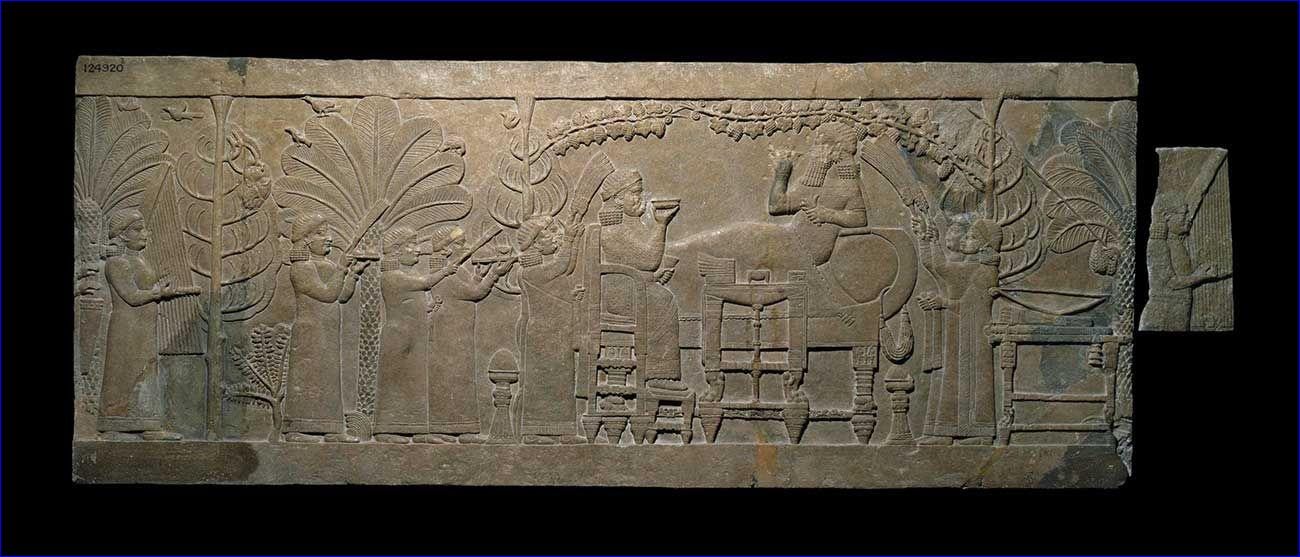


 The Trustees of the British Museum)
The Trustees of the British Museum)
"We would be happy to lend the Banquet Scene to a museum in line with our usual loan requirements, but we have not yet had any UK requests," says Paul Collins, the keeper of the museum's Middle East Department.
The Banquet Scene depicts Ashurbanipal reclining on a couch in a garden, with palms and grape vines, and drinking wine. Hanging from a nearby pine tree is the severed head of the Elamite king, Teumman, whom he defeated and executed in 653BC. The relief panel is the only surviving representation of an Assyrian king and queen dining and is one of the few images of royal women.
The gypsum sculpture was excavated in the north palace of Nineveh in 1856 by Hormuzd Rassam, a Mosul-born Assyriologist who was working for the British Museum. It was exported from Iraq under the Ottoman authorities and acquired that year for the museum's collection.
The Banquet Scene was displayed in a basement gallery until 2006, when several rooms were closed because of access problems for disabled visitors, concerns about evacuation in the case of an emergency and the costs of warding. Since then the relief has only been shown in three temporary displays: at New York's Metropolitan Museum of Art (2014-15), the British Museum's I am Ashurbanipal exhibition (2018-19) and at the J. Paul Getty Museum in Los Angeles (2019-22).
The British Museum does not reveal financial values of objects in its collection, but unconfirmed reports suggest that it was insured for around £100m when it travelled abroad. This is far more than any antiquity has ever sold for at auction. In 2015, Islamic State militants targeted Assyrian sculptures remaining in Iraq, leading to terrible destruction at Nineveh, Nimrud and the Mosul Museum. This makes the surviving reliefs in international museums of even greater importance.
The Banquet Scene has been much studied by archaeologists, who can view it by appointment in a work room. It is stored on a pallet, so is relatively straightforward to move (either for researchers or for potential museum loans).
Collins stresses that his long-term aspiration is that the Banquet Scene, together with other Assyrian reliefs in store, should go on display as part of the museum's long-term masterplan to renovate the galleries on the western side of the building (which primarily house Greek and Egyptian sculptures).
The British Museum at present has four galleries on its main floor showing sculptures from Assyria, mostly from Nimrud. These Assyrian rooms date back to the 1850s and were last remodelled in 1970. Collins has been undertaking minor improvements to the display, including improved labelling, which was due to be completed last month.

or register to post a comment.